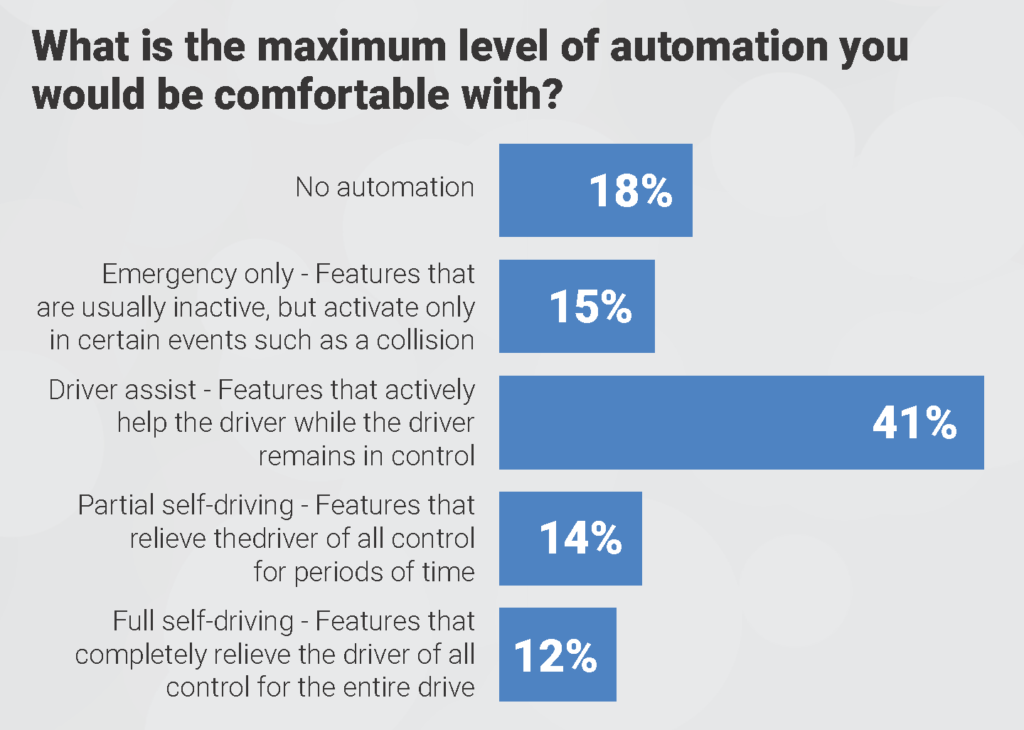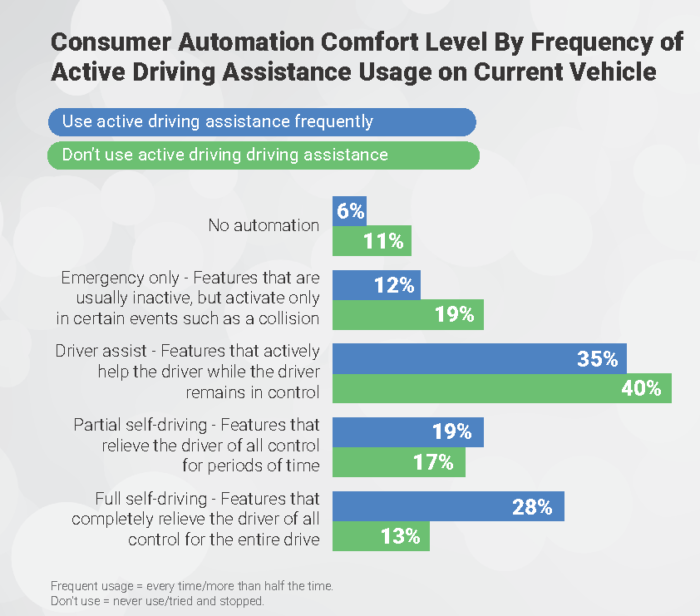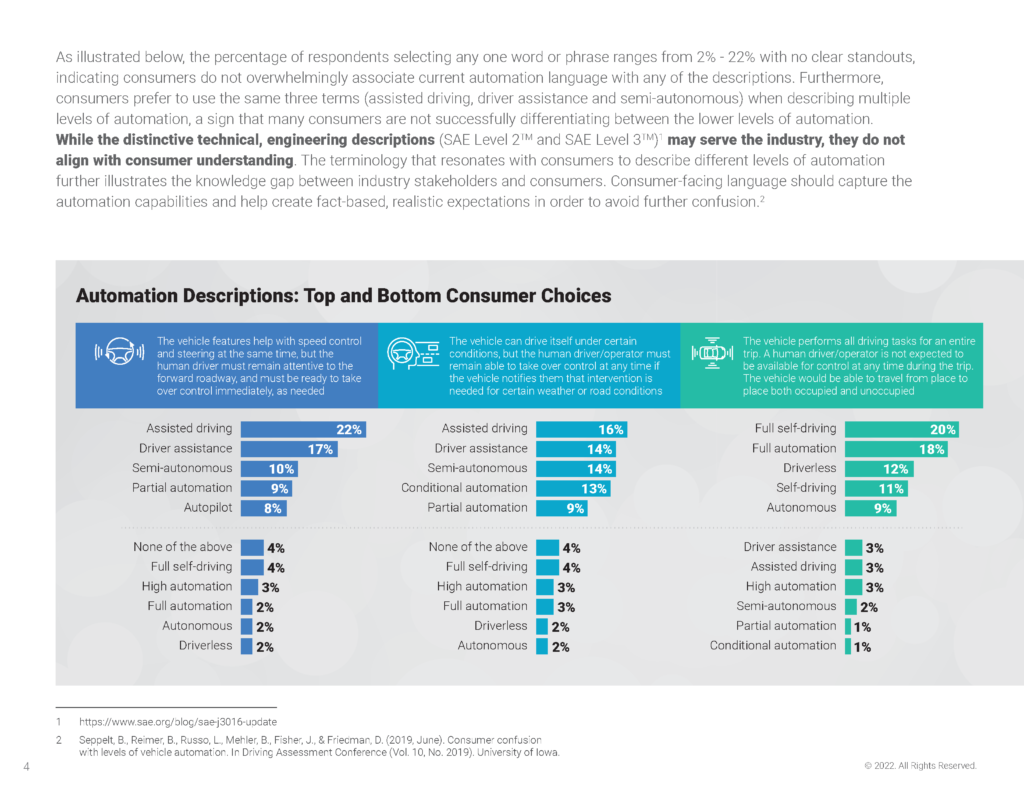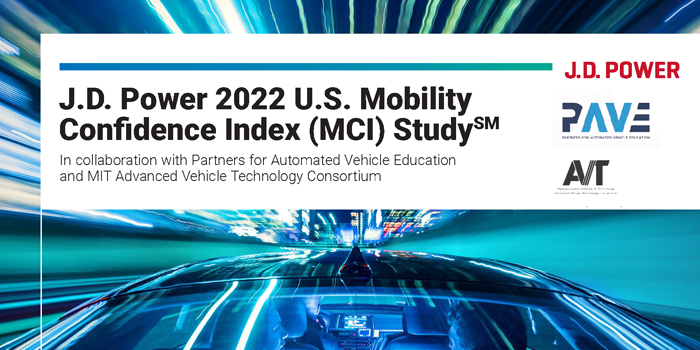 A new study (J.D. Power 2022 US Mobility Confidence Index) shows how message consistency, public education and driver-assist technology are key to AV acceptance, says Adam Howell, director of external affairs at Partners for Automated Vehicle Education (PAVE).
A new study (J.D. Power 2022 US Mobility Confidence Index) shows how message consistency, public education and driver-assist technology are key to AV acceptance, says Adam Howell, director of external affairs at Partners for Automated Vehicle Education (PAVE).
Autonomous vehicles have the potential to transform society and address numerous issues, including improving roadway safety and expanding mobility for vulnerable populations. Advanced vehicle technologies can spur new manufacturing growth and economic development, and provide a bridge to the future for workers young and old. Unfortunately, establishing a robust AV industry may be hindered by public hesitance to embrace the technology. In an age where new technologies and services are welcomed by consumers every day, why is the AV industry not seeing the same warm embrace?
For the second year in a row, J.D. Power, Partners for Automated Vehicle Education (PAVE) and the MIT Advanced Vehicle Technology Consortium conducted a broad-based survey examining a variety of consumer perceptions of autonomous vehicle technology. On October 4, the groups released the 2022 US Mobility Confidence Index (MCI) Study, which represents one of the AV industry’s most in-depth efforts to understand how consumers see vehicle automation.
Although the MCI findings are important, it is perhaps even more critical to understand why we need a study like this and what lessons the AV industry should collectively learn from it. It is self-evident that the AV industry is in a rapid period of expansion globally. Advanced driver assistance features are becoming more common in consumer vehicles, investment in vehicle automation technology has dramatically increased, and terms like ‘self-driving’ and ‘AV’ have entered the public lexicon thanks to an increase in marketing and media attention. With so much attention on the industry, it is essential to understand how the public perceives automated vehicle technology if we are ever to realize the benefits that AVs can bring to society in the future.
For the second year, the MCI Study found that consumers still have apprehension about fully autonomous vehicles. This may be partially rooted in the fact that there has not been much change in confusing vehicle feature definitions, inconsistent media stories and dissimilar marketing approaches reaching consumers. The public is being inundated with conflicting information when it comes to AV technology and that is naturally leading to distrust.
So, what do we specifically mean by inconsistent and confusing? Thanks to the MCI Study, we know that consumers often believe – incorrectly – that vehicles with advanced driver assistance features are fully autonomous. This means that many consumers may not be aware that they must maintain control and awareness when using driver assistance features. In fact, 65% of consumers polled possessed inaccurate knowledge of the definition of fully automated, self-driving vehicles. The study also shows that even those individuals who self-report a high degree of knowledge about AVs have a lower-than-average ability to accurately define what an AV is. The MCI study also shows that the words and phrases used to describe automated features have inundated consumers to the point that most people see the features as interchangeable – so the actual words become nearly meaningless.
“We’ve developed technologies that can truly save lives, but we have made the words so confusing that we’ve turned people away,” says PAVE executive director, Tara Andringa. “The MCI survey illustrates the extent of people’s confusion. We need to help cut through the jargon so drivers can easily understand these critical safety features.”

There is also good news in the MCI survey. While public trust remains low, consumers understand that advanced driver assistance technology can help improve vehicle safety, and those who use the features are generally more comfortable with the concept of higher levels of automation. These findings underscore the idea that exposure leads to trust: as drivers are exposed to new technologies that they enjoy, they are more open to the idea of even more advanced automation.
But what can industry, government and academia do now to increase the public’s understanding and trust in AVs? First, there must be forthright, consistent communication about what the technology is and, more importantly, what it is not. Industry cannot implicitly or directly overpromise what advanced driver assistance technology can do. If drivers are to embrace fully autonomous vehicles in the future, they must understand the limitations of today’s technologies and remain clear-eyed about their responsibility behind the wheel. To encourage clear public messaging, PAVE and other safety groups formed a coalition called Clearing the Confusion a few years back, which encourages responsible messaging on driver-assist features. This summer, the group updated the list of universal terms for advanced driver assistance features to help consumers compare apples to apples when shopping for a vehicle.

The MCI Study also showed other ways we can work to build consumer trust. The results showed that the public is more comfortable with the idea of autonomous shipment of goods and freight than with riding in an autonomous vehicle themselves. AV trucking could become the first step toward normalizing AV technology in the eyes of consumers, especially if AV trucking can maintain its already impressive safety record.
We also need to look at where consumers get their information. The historic reliance on owner manuals and dealership information is insufficient, and there is ample opportunity for AV industry stakeholders to work together to produce new messaging for consumers on driver assistance features and future AV technology. Demonstrations, videos, interactive training and new driver education courses are some examples of efforts that could help reach consumers in new ways.
Understanding and eventual acceptance are critical because the potential benefits of autonomous vehicle technology are too important to ignore. Currently, there is an epidemic of vehicle crashes and fatalities, and the rates are climbing every year. Information from the National Highway Transportation Safety Administration (NHTSA) highlights that human factors are still the central cause of most accidents. The socioeconomic benefits are also too great to pass up – especially since we live in a transformative time for our economy, where we need new classes of jobs and opportunities for workers. AV technology can also return freedom and mobility to the elderly, injured or disabled.
New technologies always take time to take hold, and the AV industry is no exception; however, that doesn’t mean there is nothing the industry can do to advance public trust now. PAVE’s mission to provide clear information and objective public education is more relevant than ever in the face of a growing industry challenged by greater public skepticism, misinformation and even regulatory scrutiny.



